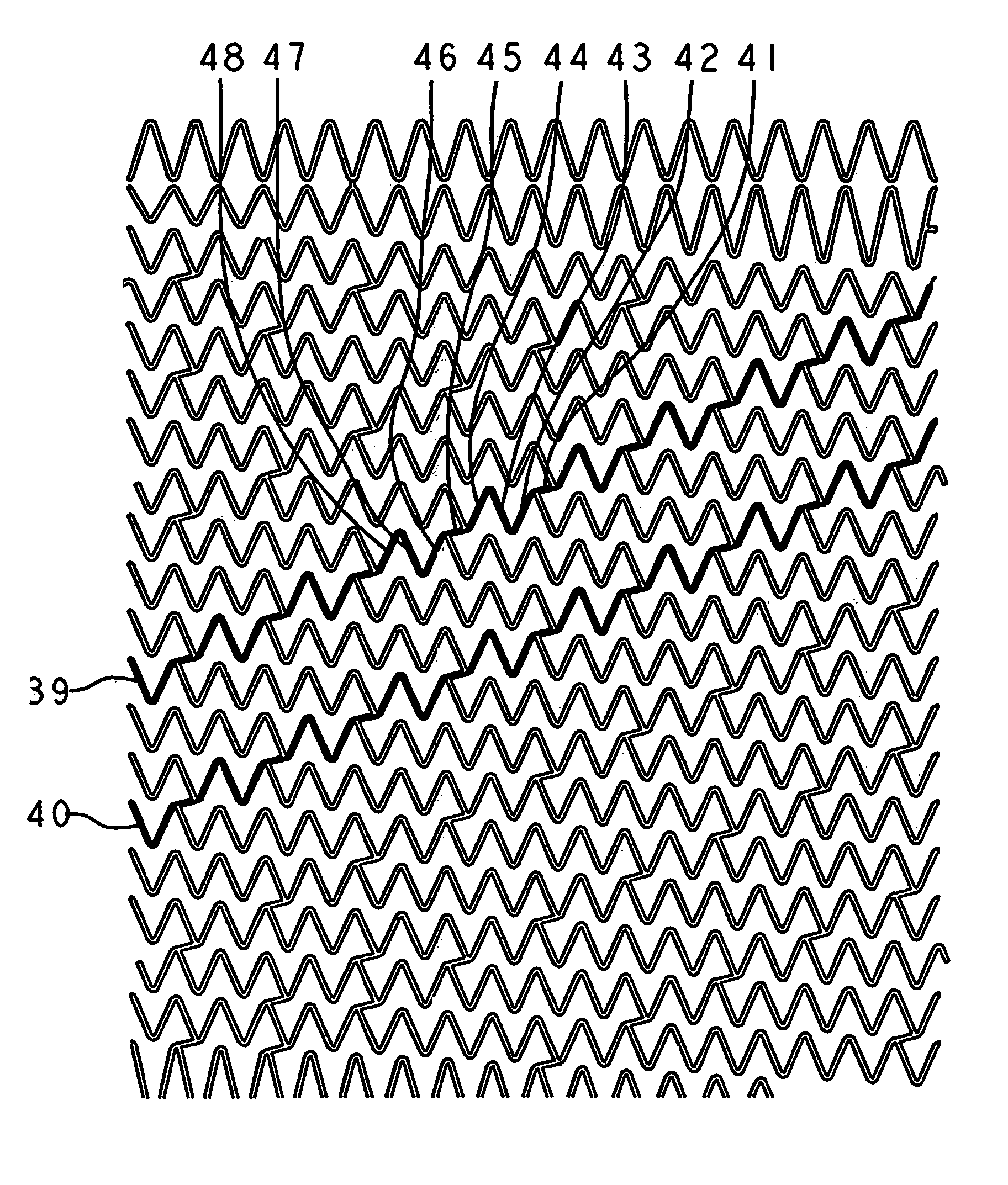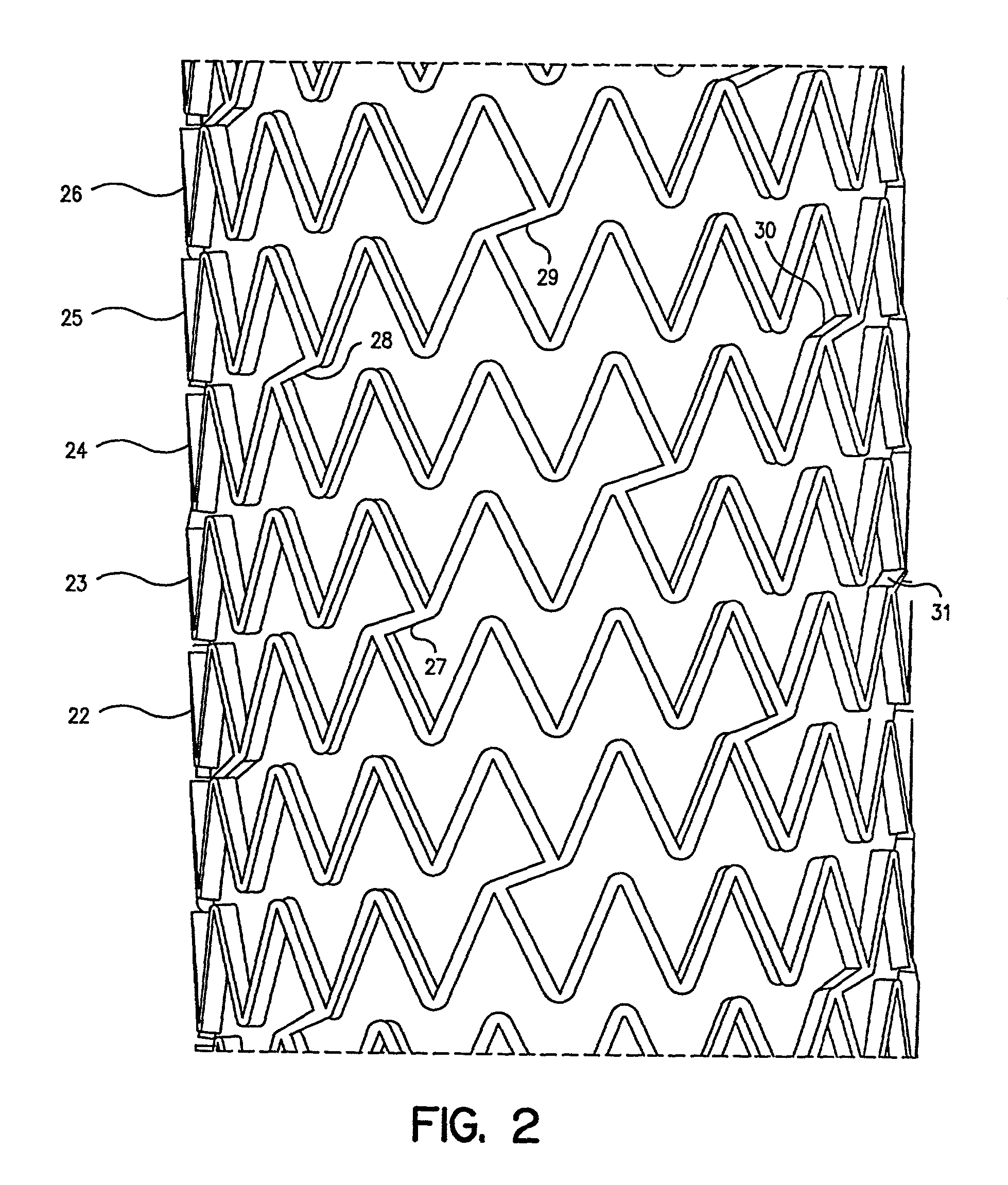Self-expanding stent
a self-expanding, stent technology, applied in the field of flexible stents, can solve the problems of stent collapse, stent inside diameter may become smaller, and stent design that has been used with self-expanding stents has certain functional problems
- Summary
- Abstract
- Description
- Claims
- Application Information
AI Technical Summary
Benefits of technology
Problems solved by technology
Method used
Image
Examples
Embodiment Construction
[0027]The present invention relates to a self-expanding stent. A stent means any medical device which when inserted into the lumen of a vessel expands the cross-sectional lumen of that vessel. The stent of the invention may be deployed in any artery, vein, duct or other vessel such as a ureter or urethra. The stents may be used to treat narrowing or stenosis of any artery, including, the coronary, infrainguinal, aortoiliac, subclavian, mesenteric or renal arteries.
[0028]The term “undulation” refers to the bends in elements forming the first type of helix in the stent. Undulations may be formed in a sinusoidal, zigzag pattern or similar geometric pattern.
[0029]The stent comprises a hollow cylindrical member having no free ends and a wall surface. The wall may have a substantially uniform thickness. In the compressed state, the stent has a first diameter. This compressed state may be achieved using a mechanical compressive force. The compressed state permits intraluminal delivery of t...
PUM
 Login to View More
Login to View More Abstract
Description
Claims
Application Information
 Login to View More
Login to View More - R&D
- Intellectual Property
- Life Sciences
- Materials
- Tech Scout
- Unparalleled Data Quality
- Higher Quality Content
- 60% Fewer Hallucinations
Browse by: Latest US Patents, China's latest patents, Technical Efficacy Thesaurus, Application Domain, Technology Topic, Popular Technical Reports.
© 2025 PatSnap. All rights reserved.Legal|Privacy policy|Modern Slavery Act Transparency Statement|Sitemap|About US| Contact US: help@patsnap.com



